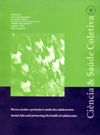1987/2013 - Family reintegration of children and adolescents in residential care in municipalities with different population sizes
Reintegração familiar de crianças e adolescentes em acolhimento institucional em municípios brasileiros de diferentes portes populacionais
Author:
• Andrea Iannelli - Iannelli, A. M. - Botafogo, Rio de Janeiro - Centro Latino Americano de Estudos de Violência e Saúde Jorge Careli - <andreaiannelli2003@yahoo.com.br>Co-author(s):
• Simone Gonçalves de Assis - Assis, S.G - CLAVES/ENSP/FIOCRUZ - <simone.assis60@gmail.com>ORCID: http://orcid.org/0000-0001-5460-6153
• Liana Wenersbach Pinto - Pinto, L. W. - CLAVES/ENSP/FIOCRUZ - <lianawp@fiocruz.br>
Thematic Area:
Saúde da Criança e do AdolescenteAbstract:
The article aims to analyze data from institutional care of children/adolescents from the perspective of family reintegration, to support public policies that provide effective reintegration according to different local contexts. Uses data from 1,157 municipalities that have residential care services (IAS). The methodology considers the data collection in 2624 SAI country (information services and each received through questionnaires, medical records and information technicians), and welcomed 36,929 children and adolescents.One sees the growing number of children/adolescents in SAI with increasing population size: 8.4 welcomed by smaller city; 60 big city, and 602.4 per metropolis. As for the place of residence in another municipality be responsible the IAS - varying indices are: 12.4% in cities and 33.6 % in small cities, showing absence of IAS close to the family. Regarding the activities promoted with families, we realize that there are units that do not perform any activities contrary to the laws of the country. It appears that policies for the child/adolescent in IAS need to consider the capacity of the municipality as population size for joint actions to support families corroborating family reintegration.











